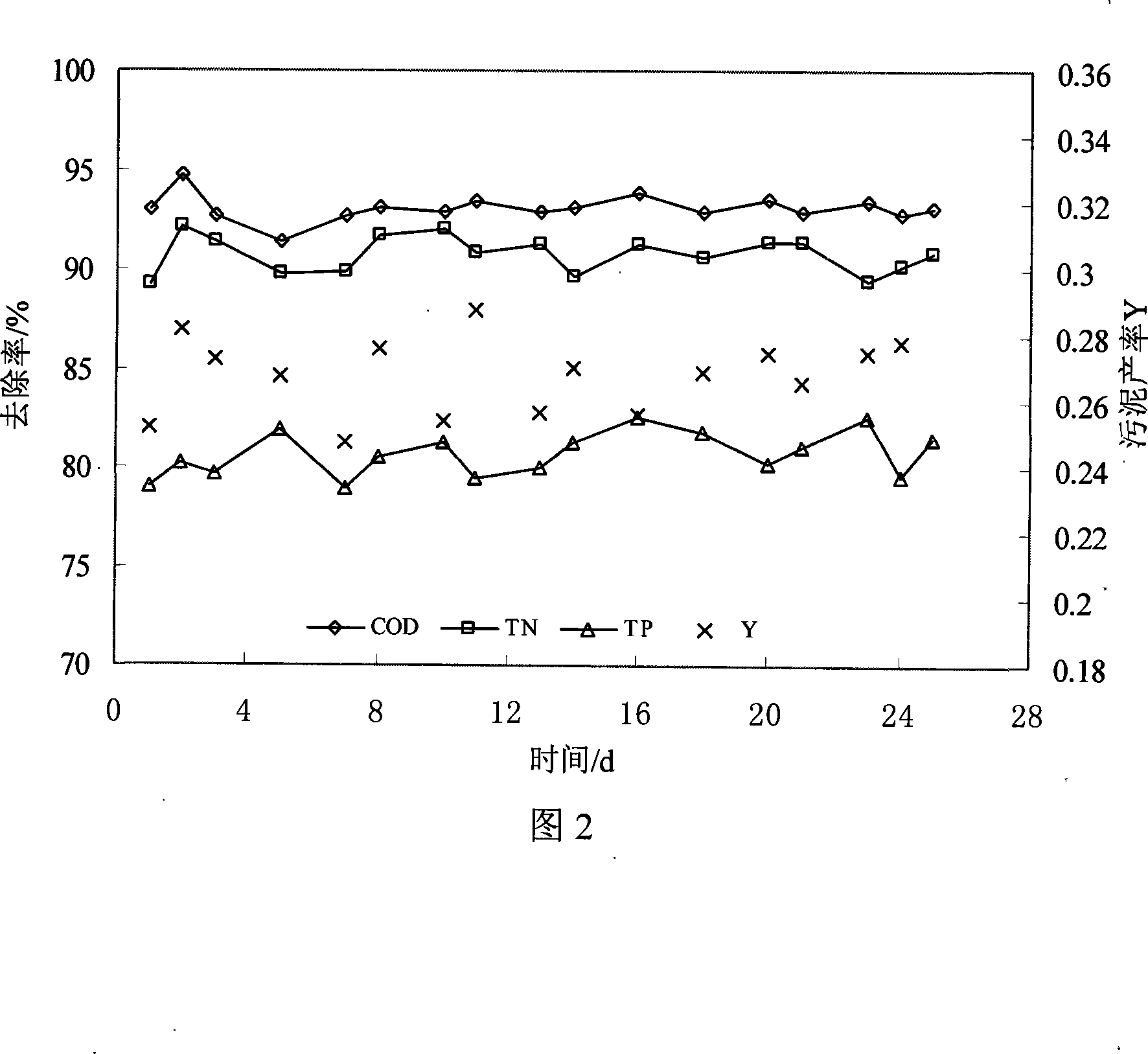Method for sludge decrement by using endogenous denitrification denitrification dephosphorization and reaction system
An endogenous denitrification and biological denitrification technology, which is applied in the field of sludge reduction reaction system, can solve the problems of weakened removal of nutrients such as nitrogen and phosphorus, poor sludge settling performance, and increased energy consumption of sewage treatment. Achieve the effect of promoting sludge reduction, long residence time, and realizing sludge reduction
- Summary
- Abstract
- Description
- Claims
- Application Information
AI Technical Summary
Problems solved by technology
Method used
Image
Examples
specific Embodiment approach 1
[0011]Specific embodiment one: illustrate in conjunction with Fig. 1, utilize endogenous denitrification biological denitrification and dephosphorization in the present embodiment to make the method for sludge reduction be completed through the following steps: 1. The supernatant of middle sedimentation tank 8 reflux The sludge and the influent of liquid and sludge anaerobic tank 4 return, in the aerobic oxidation tank 2, remove most of the organic matter in the sewage through the aerobic oxidation of aerobic heterotrophic bacteria; Sewage enters the aerobic biofilm nitrification tank 3, and in the aerobic biofilm nitrification tank 3, ammonia nitrogen is converted into nitrate nitrogen through the nitrification of the aerobic autotrophic nitrifying bacteria group; Salt nitrogen sewage enters the anoxic denitrification tank together with the return sludge from the middle sedimentation tank, and the phosphorus accumulating bacteria use nitrate as the electron acceptor to consume...
specific Embodiment approach 2
[0014] Specific embodiment 2: The difference between this embodiment and specific embodiment 1 is that in step 7, the reflux ratio of the sludge returned to the aerobic oxidation tank 2 and the sludge returned to the middle sedimentation tank 8 is controlled between 0.5 and 0.6 between. Other reaction steps are the same as in Embodiment 1.
specific Embodiment approach 3
[0015] Embodiment 3: The difference between this embodiment and Embodiment 1 is that in step 7, the reflux ratio of the sludge returned to the aerobic oxidation tank 2 and the sludge returned to the middle sedimentation tank 8 is 0.55. Other reaction steps are the same as in Embodiment 1.
PUM
 Login to View More
Login to View More Abstract
Description
Claims
Application Information
 Login to View More
Login to View More - R&D
- Intellectual Property
- Life Sciences
- Materials
- Tech Scout
- Unparalleled Data Quality
- Higher Quality Content
- 60% Fewer Hallucinations
Browse by: Latest US Patents, China's latest patents, Technical Efficacy Thesaurus, Application Domain, Technology Topic, Popular Technical Reports.
© 2025 PatSnap. All rights reserved.Legal|Privacy policy|Modern Slavery Act Transparency Statement|Sitemap|About US| Contact US: help@patsnap.com


